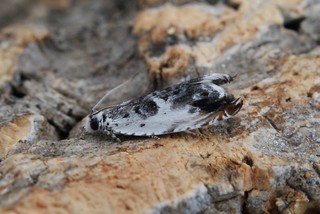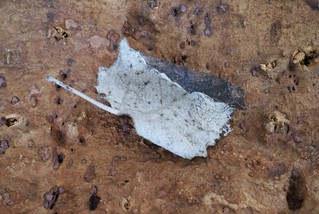Otherwise known as the Firethorn Leaf Miner.
Given the widespread nature of the larval food plant, Pyracantha, this one can be found in many gardens and suburban locations and is spreading rapidly northwards. If you do find this one, there tends to be hundreds of mines on any given Pyracantha, sometimes it seems that almost all leaves are affected.



Final word on this, when searching on Pyracantha, keep an eye out for other mines as I recently found this one, which although waiting to rear through for ultimate confirmation, this appears to be the first UK record on this food plant for Phyllonorycter oxyacanthae.

Phyllonorycter oxyacanthae mine on Pyracantha - the first UK record on this plant, East Kent, April 2013.



















